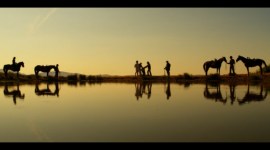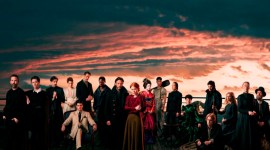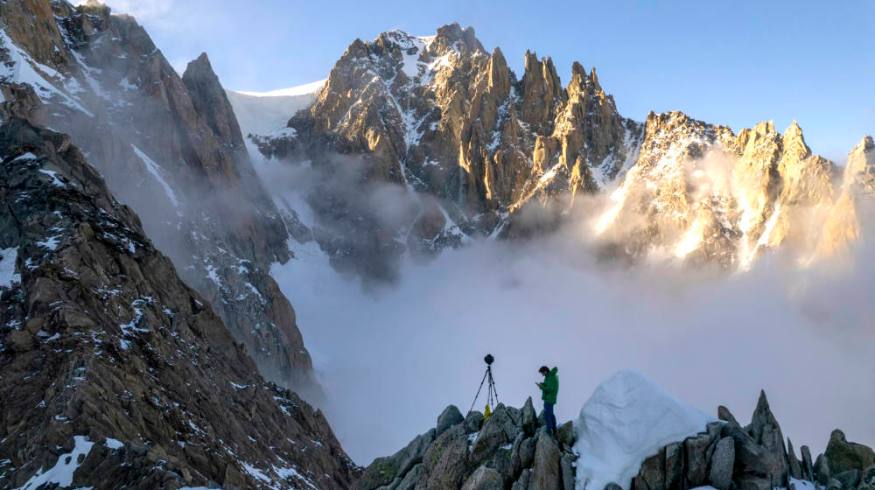
Is VR Filmmaking the Future of Storytelling?
Soloist VR Filmmaker and recent Cannes XR recipient, Jonathan Griffiths, chats with us about making movies for the Metaverse and the future of VR filmmaking and storytelling experiences.
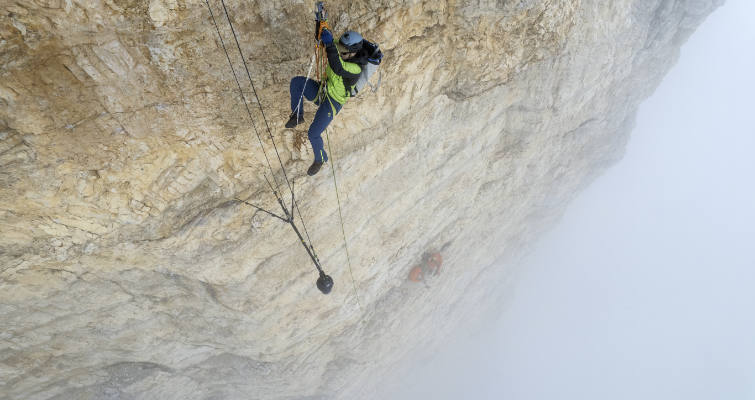
Virtual reality seems to be a long-serving “princess” technology, although Meta’s boss Mark Zuckerberg believes strongly in its eventual success as the access to his beloved Metaverse. While it has never cut through to the mainstream, it’s lauded by the people who invest in it. Producing films in VR has numerous restrictions and impracticalities, but for producer Jonathan Griffith VR filmmaking represents the future of storytelling.
One of Jonathan’s VR films was “Everest VR.” Made in 2019, it was the first-ever high-resolution Virtual Reality Mount Everest film, following a Nepalese climber’s attempt at a no-bottled oxygen ascent of the mountain. Now, Jonathan will all but dismiss this film as a failure, describing an ascent to Everest as just “walking”—nobody “climbs” to the top of a mountain like Everest.
You may think he is overly harsh on himself and his work, but Jonathan admits that this film was shot without fully understanding how differently a filmmaker has to think, plan, and produce to film in VR. “It’s a re-invention of your filmmaking,” he says.
A History of Climbing
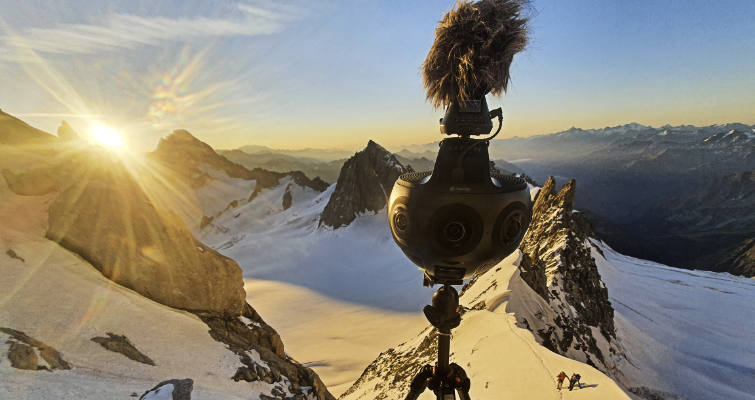
Jonathan has been shooting stills and video for the last twenty-five years, even joining the Planet Earth II team to shoot the Mountain episode, which was the most-watched natural history documentary at the time. He has lived in Chamonix for twenty years, which sits at the foot of Western Europe’s highest mountain, Mont-Blanc, and is the center of the European Alpinist world.
He first experienced VR a few years ago with the basic Google Cardboard smartphone holder and was instantly hooked, seeing it as a natural evolution of his filmmaking. Even though VR at the time was incredibly niche, he committed himself to it. “People were investing millions into it, and there was inevitably a bubble which burst just after I’d joined the world.”
He was motivated toward the three-part Everest film project (and exploring this new medium) due to his climbing content expertise and connections to some of Europe’s best climbers. He subsequently showed the movie to Meta and their Oculus team, who invested in it as part of their Oculus TV content choice.
VR Filmmaking: The Production Difference
Jonathan’s approach to shooting his first VR film was similar to how he had been shooting productions throughout his career. He was to lace his narration with the trappings of standard documentary making—orchestral music, narrations, fast cuts, and camera movement. As he shot more footage, he realized that all these things needed to change or even disappear from his VR work.
“When I look at Everest now, I think it’s a terrible VR film, and I’m critical of it.” His loathing of his work is based on those traditional documentary tools like voiceover, multiple characters, and music. He had been struck with how VR needed to strip away those things to give you that pure experience of being there.
His new film, The Soloist, would be built on this new set of filmmaking principles. We would see Oscar-winning climber Alex Honnold take on free ascent climbs in some of the most remote and wildest locations possible in the US and Europe. But first, Jonathan had to forget all his documentary filmmaking instincts, especially when the strengths of VR are the exact opposite of traditional flat-screen content.
“Traditional flat-screen media is swift cuts, action, music, and a plethora of stuff to keep your attention and keep you engaged—we’re so quick to turn off now.” Putting all these things into VR makes it overwhelming for the viewer. Jonathan admits that his Everest film was shot traditionally and then laid into a 360˚ timeline. The immersion you’re offering your audience doesn’t need to be jumped out of with these traditional techniques. “If you throw all that information at them, they can’t process it as they’re trying to deal with the environment you have put them in.”
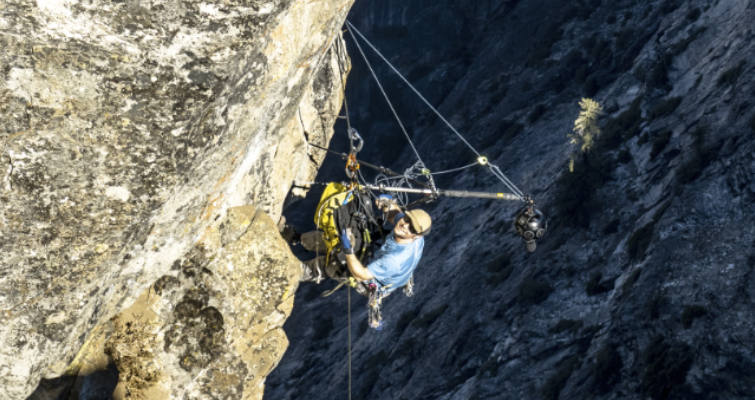
But surely, when you extract that blend of music and narration, you risk oversimplifying the final product. You don’t have a voiceover or any talking head interviews or music. You have as few clips as possible, with the ones that you do use lasting for minutes at a time. The first time we meet Alex on the face of a mountain, the scene is nearly nine minutes long, and all you hear is his breath and heartbeat.
You then wrap it all up in a simple linear storyline. It’s an unsaturated experience that leans entirely on your subject matter. With soloing, that means just one person, so there is no human interaction.
Jonathan’s pre-production time is now all in crafting the story, where the effort is to present a kind of live moment. “It was a massive challenge to make that work while holding the viewer’s attention.” Jonathan had to push Meta to understand why he was producing it this way, “When you suggest to a client that a film will have no voiceover and no music, it’s kind of scary, especially when they’ve spent so much money on it.”
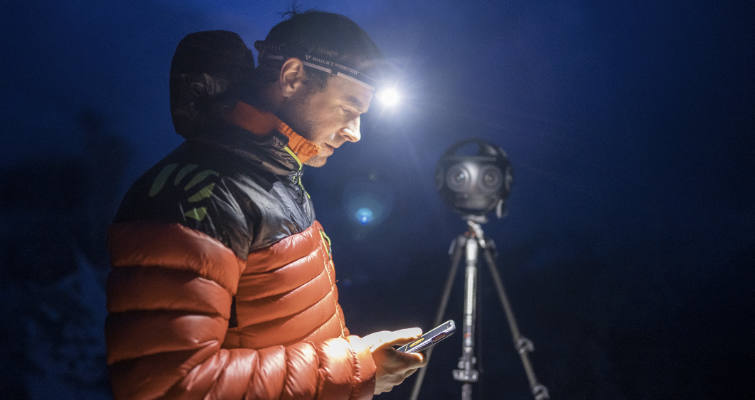
VR Filmmaking: Stitching and Post
Another basic restriction of working in VR is how the camera needs to be still. Any movement will play havoc with the viewer and cause vertigo problems, so Jonathan placed his Insta Titan eight-camera VR unit on rigs above and below Alex. The Titan would be close to Alex and try and replicate what he saw, again to give the viewer some bonding experience.
Editing VR isn’t simple. The cameras have eight lenses designed to capture a 360-degree view, which produces eight clips at 3840 x 2880 resolution each. Editor Matt DeJohn used DaVinci Resolve Studio, creating a timeline at 7680 x 7680 resolution with the added complexity of stereoscopic left and right eye in top/bottom orientation. These angles were then stitched together to create a 360-degree, stereoscopic image. Once setup was complete, including syncing spatial audio and mic tracks, the editorial process could begin.
Unfortunately, the stitching isn’t an automated process, so Jonathan spent many days hand stitching the frames, almost like a composite exercise. Fusion Studio helped with the base stitch and the cleanup. Through the post, Jonathan could still see the VR progress and wasn’t limited to a 2-channel mix. “I love that I could see the film growing at every stage, as opposed to having to imagine things because the edit hadn’t locked or the color hadn’t been touched yet,” said Griffith.
The VR Paradigm
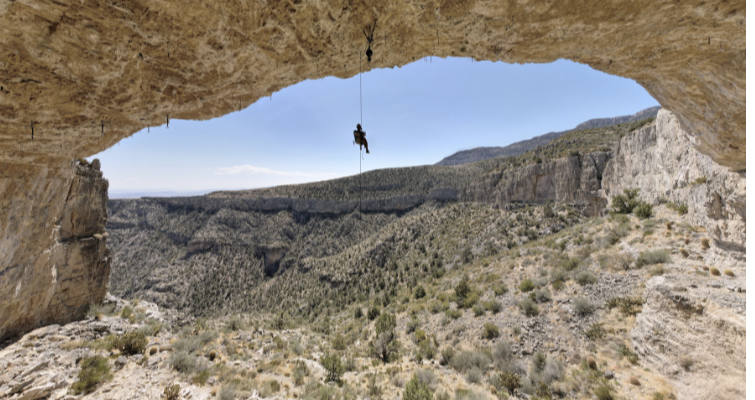
But with all of his filmmaking instincts turned around and even with an initially hesitant client like Meta, Jonathan has indeed reinvented VR production. His Cannes award this year gives him the validation to carry on this way with more climbing content and other more timely VR films to come.
Jonathan has had some very high praise for the new film, with the CTO of Meta, Andrew Bosworth, chiming in, “He used to run the Meta VR side until he became Mark Zuckerberg’s right-hand man. He got it and admitted that he hadn’t seen anything like it. He appreciated that the film’s structure was completely different from anything done before and worked so well.”
Jonathan concluded his experience by saying that VR had no limits and that any subject matter would suit the new medium. He also admitted that eighteen months ago, he wouldn’t have thought that. “You just have to think about how to achieve it.”
Soloist VR is currently on the Oculus App.
Feature image via Jonathan Griffith.
For more articles about VR filmmaking, visit the links below!



